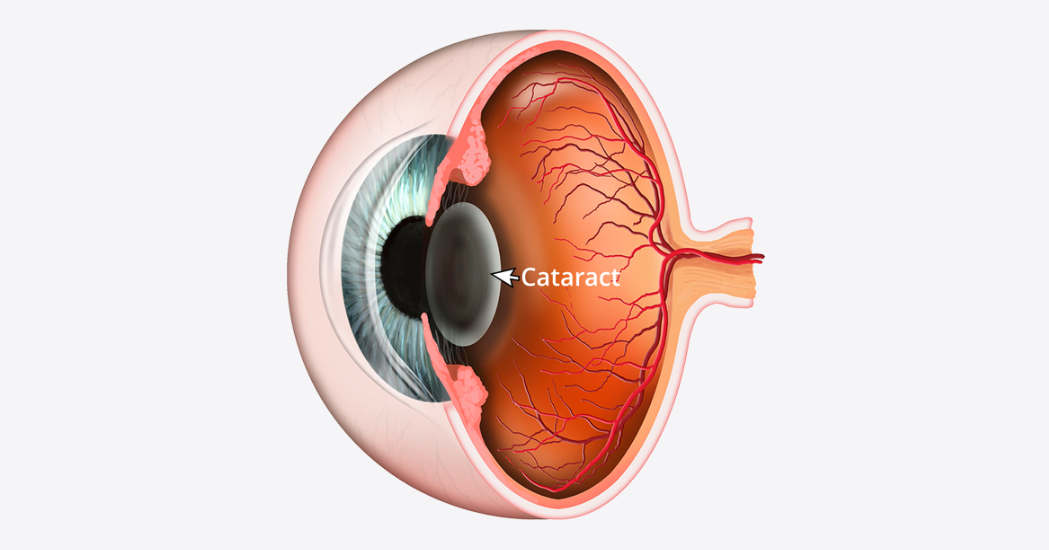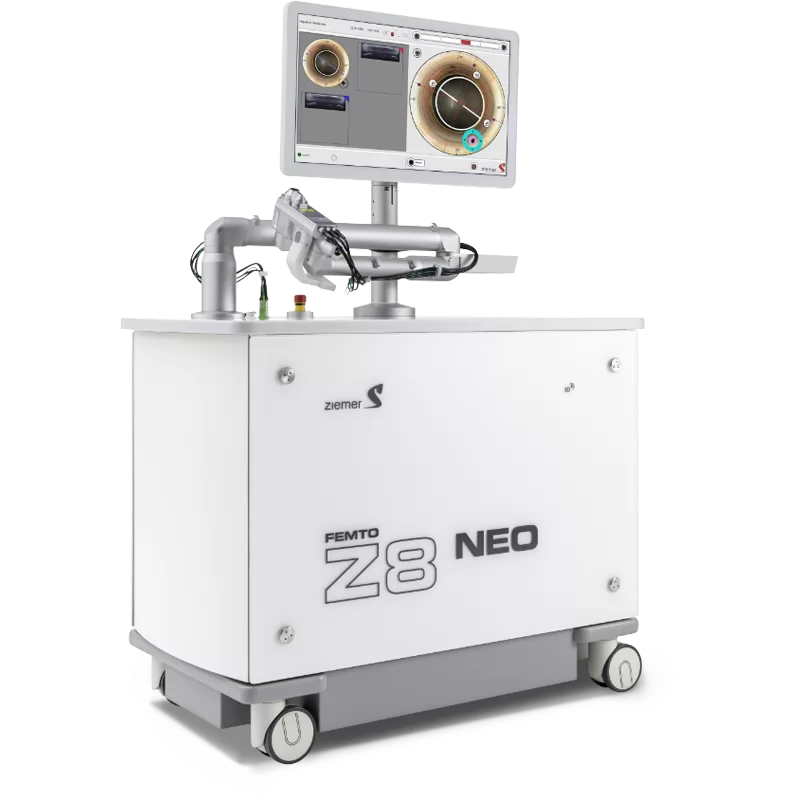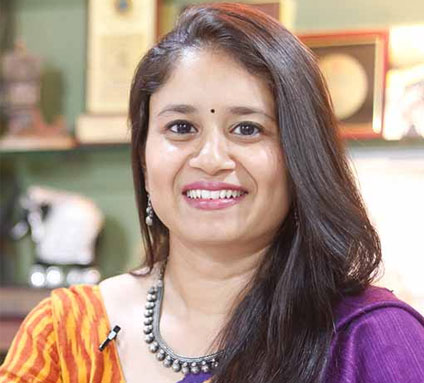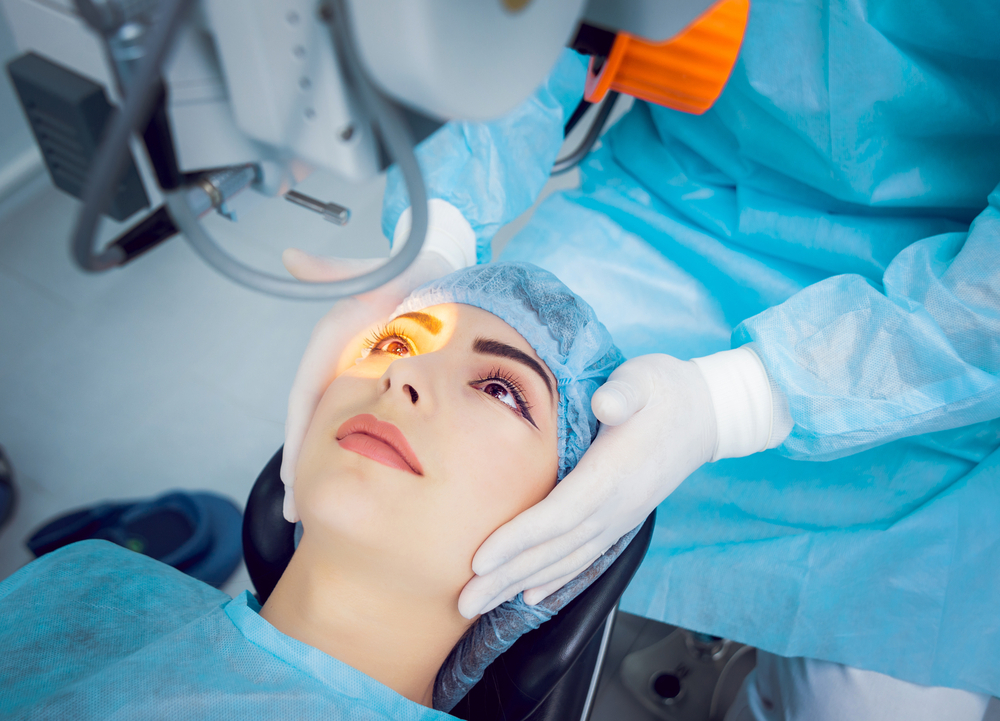Bladeless Cataract Surgery in Dombivli
What is Cataract?
A cataract is a common eye condition that occurs when the natural lens inside the eye becomes cloudy, leading to a progressive loss of vision. The lens, which is usually clear, plays a crucial role in focusing light onto the retina at the back of the eye. When a cataract forms, it causes the lens to become opaque or cloudy, hindering the passage of light and affecting vision.
Laxmi Eye Institute is at the forefront of providing top-tier Bladeless Cataract Eye Surgery in Dombivli.

Key Characteristics of Cataracts:
Lens Clouding: Gradual clouding of the lens impacts vision clarity.
Vision Changes: Cataracts lead to blurred or hazy vision.
Progressive Development: Cataracts develop slowly, with a noticeable impact over time.
Risk Factors: Aging, UV exposure, medications, and health conditions contribute to cataract development.
Common in Aging: More prevalent in older adults, with an increased risk over the years.
Various Types: Categorization based on location and development, including nuclear, cortical, and subcapsular cataracts.
Correctable with Surgery: Highly effective cataract surgery replaces the cloudy lens with an artificial IOL.
Global Prevalence: Cataracts are a major global cause of vision impairment, but advancements offer effective treatments.
Symptoms commonly associated with cataracts:
Blurred or Cloudy Vision
Vision becomes progressively cloudy, hazy, or blurred, impacting the clarity of sight. |
Sensitivity to Light
Increased sensitivity to bright lights or glare, making it uncomfortable to be in well-lit environments. |
Difficulty Seeing at Night
Impaired night vision, leading to challenges in seeing clearly in low-light conditions. |
Halos Around Lights
Seeing halos or circles around lights, especially at night. |
Faded Colors
Colors may appear dull, faded, or yellowed, affecting the ability to perceive vibrant hues. |
Double Vision
Seeing double images in one eye or experiencing overlapping images. |
Frequent Changes in Eyeglass Prescription
Needing changes in eyeglass prescriptions more frequently than usual. |
Difficulty Reading or Performing Close-Up Tasks
Struggling with tasks that require clear near vision, such as reading or sewing. |
Changes in the Way You See Prescription Glasses
Glasses that were once effective may no longer provide the same level of improvement in vision. |
Loss of Contrast Sensitivity
Reduced ability to differentiate between objects and their background due to decreased contrast sensitivity. |
Gradual Vision Loss
Vision loss tends to develop slowly over time, often without immediate awareness. |
Vision Improvement in Bright Lighting
Some individuals may notice an improvement in vision in well-lit environments. |
Spotting Cataracts Early Ensures a Lifetime of Clear Vision.
Experience a revolution in eye care with Bladeless Cataract Surgery.
Book your ConsultationTypes of Cataract Surgery
Phacoemulsification
Utilizes ultrasonic vibrations for cataract removal.
Involves a small incision for quicker recovery.
Extracapsular Cataract Extraction (ECCE)
Removes the cloudy lens in one piece.
Larger incision may be required for specific cases.
Laser-Assisted Cataract Surgery (LACS)
Employs laser technology for precise incisions.
Enhances overall surgical accuracy.
Manual Small-Incision Cataract Surgery (MSICS)
Manual approach with a smaller incision than ECCE.
Suitable for resource-limited settings.
Bladeless Cataract Surgery Procedure at Laxmi Eye Institute & Hospital, Dombivli
Patient Preparation:
Thorough pre-operative assessments ensure personalized care.
Detailed patient instructions for a seamless surgical experience.
Anesthesia with Comfort:
Local anesthesia guarantees a painless and comfortable procedure.
Swift recovery facilitated by the use of local anesthesia.
Precision Incisions with Femtosecond Laser:
Femtosecond laser creates precise corneal incisions.
Enhances accuracy, speeds healing, and reduces postoperative discomfort.
Efficient Lens Fragmentation:
Ultrasonic or laser technology fragments the cloudy lens.
Minimizes disruption to the eye for efficient removal.
Gentle Lens Removal:
Delicate suctioning removes the fragmented lens.
Minimized trauma for a smoother recovery.
IOL Implantation:
Careful insertion of a personalized synthetic intraocular lens.
Addresses individual visual needs for optimal outcomes.
Precision Incision Closure:
Femtosecond laser ensures accurate incision closure.
Promotes faster healing, reduces complications.
Postoperative Care:
Thorough postoperative care instructions and follow-up appointments.
Expert medical team accessible for any concerns during recovery.
Experience the advanced and compassionate approach to cataract surgery at Laxmi Eye Institute & Hospital in Dombivli, where precision meets personalized care.
Robotic-Assisted Cataract Surgery at Laxmi Eye Institute & Hospital in Dombivli
Latest Technology
Precision with Robotics:
Laxmi Eye Institute & Hospital in Dombivli pioneers robotic-assisted cataract surgery, employing bladeless technology for enhanced precision.
The procedure customizes incisions and lens placement, ensuring optimal outcomes for each patient.
Real-time Imaging:
With a commitment to excellence, Laxmi Eye Institute & Hospital incorporates advanced imaging technology into cataract surgery.
This real-time imaging capability provides a detailed view of the eye, empowering surgeons to make informed decisions during the procedure, further ensuring the highest standard of care.

Risks of Bladeless Cataract Surgery
Infection:
Minimal risk, but potential for postoperative infection.
Bleeding:
Minor bleeding may occur rarely post-surgery.
Inflammation:
Possible inflammation, typically well-managed with medications.
Rare Complications:
Rare instances of complications such as retinal detachment or persistent swelling.
Benefits of Bladeless Cataract Surgery
Enhanced Precision
Unparalleled precision in incision creation and lens placement.
Minimized Discomfort
Smaller, precise incisions lead to reduced eye trauma and postoperative discomfort.
Faster Recovery
Quicker recovery period due to minimal tissue disruption.
Reduced Dependency on Glasses
Potential for decreased reliance on glasses or contact lenses postoperatively.
Customized Treatment
Tailored incisions and lens placement for individualized visual needs.
Optimal Visual Outcomes
Aims for clearer and sharper vision compared to traditional surgical methods.
State-of-the-Art Technology
Utilization of advanced femtosecond laser technology showcases commitment to cutting-edge techniques.
Improved Safety Profile
Well-established safety profile contributes to the procedure's reliability and effectiveness.
High Patient Satisfaction
Patients often report high satisfaction levels due to technological advancements and impressive visual outcomes.
Our Bladeless Cataract Surgeon in Dombivli

Dr. Tanvi Haldipurkar
Ophthalmologist Navi MumbaiDr. Tanvi Haldipurkar, our esteemed ophthalmologist, specializes in painless Bladeless Cataract surgery in Navi Mumbai, at Laxmi Eye Institute & Hospital, an internationally recognized eye hospital with centres at Panvel, Kharghar, Kamothe, and Dombivali. Dr. Haldipurkar ensures unparalleled eye care and vision correction in Navi Mumbai.
Cost of Bladeless Cataract Surgery at Laxmi Eye Institute & Hospital in Dombivli
The cost of bladeless cataract surgery at Laxmi Eye Institute & Hospital in Dombivli can vary based on factors such as the surgeon's expertise, the type of intraocular lens chosen, and the facility's reputation. On average, the cost may range from Rs. 10,000 to Rs. 1,00,000. It's important to consult with your healthcare provider and insurance company to understand the specifics of coverage and any potential out-of-pocket expenses.
Prevention
Regular Eye Exams:
Detects cataracts early.
Healthy Lifestyle:
Balanced diet, UV protection, no smoking.
Aftercare and Recovery
Follow Medication Instructions:
Use prescribed eye drops as directed.
Protective Eyewear:
Shield eyes from bright light and dust.
Avoid Strenuous Activities:
Minimize bending and heavy lifting.
Experience Crystal-Clear Vision
Bladeless Cataract Surgery at Laxmi Eye Institute & Hospital, Dombivli.
Book Your Appointment NowFrequently Asked Questions
-
Q. 1Is bladeless cataract surgery available at Laxmi Eye Institute & Hospital in Dombivli?
Yes, explore the latest in bladeless technology for cataract surgery at Laxmi Eye Institute & Hospital.
-
Q. 2Can I choose the type of lens used in bladeless cataract surgery at Laxmi Eye Institute & Hospital?
Absolutely, discuss lens options, including bladeless technology, with your surgeon for a customized solution.
-
Q. 3How soon can I resume normal activities after bladeless cataract surgery at Laxmi Eye Institute & Hospital?
Most patients can return to daily activities within a few days.
-
Q. 4Is bladeless cataract surgery covered by insurance at Laxmi Eye Institute & Hospital in Dombivli?
Check with your insurance provider; coverage may vary.
-
Q. 5Are there age restrictions for bladeless cataract surgery at Laxmi Eye Institute & Hospital?
No strict age limit; surgery is recommended when cataracts affect daily life.

Bladeless Cataract Surgery in Dombivli
Bladeless cataract surgery at Laxmi Eye Institute & Hospital in Dombivli represents an advanced approach to traditional cataract procedures. Unlike conventional methods, this innovative technique incorporates femtosecond laser technology for increased precision and improved outcomes.
All Copyright© Reserved @ Laxmi Eye Hospital And Institute
